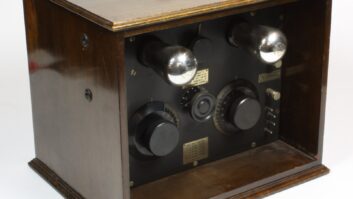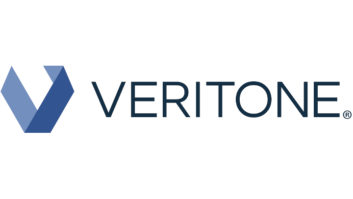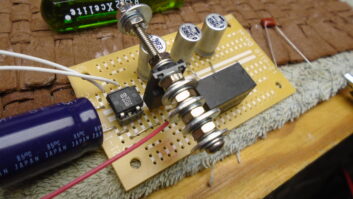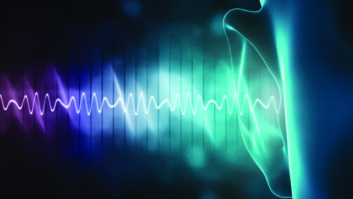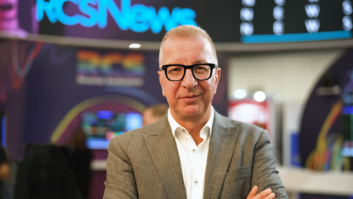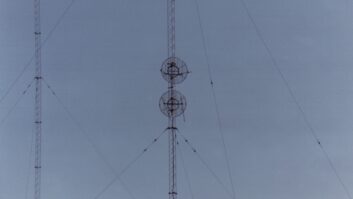The Sound of Traffic
Dec 1, 2001 12:00 PM, By Conrad Trautmann, CPBE
After nearly 20 years of working in radio, being involved in the design process of Westwood One’s Washington, DC, studio facility was something of a departure from my experience. I learned that sound isolation, sound deadening and noise elimination are not necessarily a primary focus. In some cases, background noise can be a good thing.
Located at 8403 Colesville Road in Silver Spring, MD, are the offices and studios for Westwood One, Shadow Traffic, Metro Traffic and SmartRoute Systems. On the 15th floor of a 17-story building that resembles a stealth fighter, the offices and studios occupy a combined space of 21,000 square feet, about 7,000 of which are dedicated to 28 sound studios, four television studios and an operations/traffic/news gathering area. The new facility was designed to consolidate Shadow and Metro Traffic operations, which were located in Chevy Chase, MD, Smart-Route Systems (also known in the Washington area as Smart Traveler), which was located in downtown Washington, and Westwood One’s administrative offices, which had been located in Arlington, VA. The primary product delivered from the new facility is traffic information to affiliate radio stations. News and information are secondary. For simplicity, I’ll refer to all the occupants jointly as Westwood One hereafter.
Early in the design phase, I questioned the fact that the studios were to have standard office walls, doors and windows, and that the HVAC had no special sound isolation. I was skeptical that this would work successfully, but was assured that many of the other traffic facilities we had around the country were built the same way, and all of them worked very well.
Common practice in radio engineering is to strive for the best audio at all times. Despite these efforts, it is not uncommon for programming to complain that the audio is �too clean.� Many engineers have used expensive noise-canceling headset mics, wide-band RPU/ICL systems and modified two-way radios, only to be forced to equalize the feed to make it sound like it’s not in the studio. Another common scenario is to create a studio with nearly perfect sound-isolation specifications, with superior microphones and processing, only to have the news department run an endless loop sound effects bed under the announcer to make it sound like it’s coming from the newsroom.
Unlike a traditional radio studio, there are no monitor speakers in our facility. Sound isolation design in a radio station is to prevent sound from one studio from bleeding out of that studio or into another studio while a mic is open. We know that production talent like to listen to their final product through large monitors with 12-inch woofers driven by a 150W power amplifier. Add the common air-talent practice of cranking that new song in the air studio. This is not the case in a traffic or news studio. In such rooms, the traffic or news announcer is only listening for an IFB or cue from the affiliate station; this is done with headphones. Even with back-to-back studios, the announcer’s voice from one room is not a distraction to an announcer in the next room. We take some measures to deaden the sound, such as sealing any penetrations between the rooms and lining the ceiling tiles and adjoining walls with bats of insulation, but the sound level created in the booths is nowhere near that of a typical radio station, and that eliminates the need for an isolated booth.
Sound off now
As I mentioned above, noise can be a good thing, and to get the sound of a working newsroom or traffic center on the air, many of the Westwood One studios are designed to face the operations desk where information is gathered. Many announcers leave the studio doors open so that they can easily communicate with the producers who update them minute-by-minute of traffic conditions. All of these added audio sources also come through on the air.
All cabling is a home run from each studio to a central rack room. SAS 32000 routers route each studio to the affiliate station and handle IFB routing. An announcer can be in any booth in the facility and feed any affiliate station by selecting it on the program router. This offers complete redundancy in the event of an equipment failure in a booth. Stations that cannot be monitored off air or require a feed pre-delay IFB have dedicated lines that can be routed to the studios using the IFB panel. In the Washington market, we feed 37 stations with dedicated audio loops provided by Verizon, and a few have return loops for IFB. We also use ISDN and standard phone couplers for IFB returns.
The rack room relies on backup power from a 15kVA Best UPS, and the entire facility is connected to a 150kW generator. Since the building air conditioning only runs during business hours, a 35-ton supplemental air conditioning unit was installed to provide climate control. It uses an electronic variable air volume system to allow individual temperature control in the studios and operations center.
Each booth is equipped with a Dixon NM 250 mic mixer, which in addition to standard balanced-line outputs, has unbalanced inputs and outputs, eliminating the need for an impedance-matching box to connect our MetroSource computers and their standard PC audio card. The Dixon mixer also has remote switching capability for mic on/off control and control of external sources. It has three buses, one program, one monitor and a mix-minus for the phones.
The booth also has a Sennheiser 421 microphone, a program router control panel, an IFB control panel (with monitor speaker), a Telos hybrid, a VCR and television, a tuner, cassette deck, and a MetroSource computer.
The MetroSource computer serves a few functions. First, it runs the MetroSource software, the newswire service that Westwood One originates from our Phoenix newscenter. The MetroSource computer takes the place of a reel-to-reel recorder to record and edit in each room. It also serves as the system to distribute traffic information data to each studio from the producer’s area. Information is input into the producer’s computer and is made available to all studios.
The operations desk is where all of the information is gathered. Two-way radios provide communication with the three aircraft we fly and the two mobile ground reporters during morning and afternoon drive. Scanners supply the ability to listen to police and other emergency services for tips on conditions. Video feeds come from the Virginia Department of Transportation, Maryland Department of Transportation and from WW1’s own five cameras placed around the Washington metro. The DOT cameras can be remotely switched, giving access to a total of 50 cameras. Co-locating Smart Traveler adds another six cameras.
TV-1 fiber lines provided by Verizon transmit many of these video feeds and provide connectivity to the local TV stations. A few of the feeds come in via microwave, and many of the images we access are used on the air of the television stations during the reports. Each TV studio has a local video switcher that allows the talent to switch between their own camera, the various traffic cameras and maps of the local area showing trouble spots. An in-house video modulator system provides feeds of all of the cameras to each studio through the in-house cable system. This allows the announcers to see what is actually happening.
Wise travels
Smart Traveler, which also has producers at the operations desk, translates the information it gathers into content used for the Internet and for on-demand dial-in telephone access. Information entered into the Smart Traveler system is translated from text to voice by an Interactive Voice Response (IVR) system. We also have the ability for announcers to record information in real time into the system, so callers will get a human voice instead of a computer-generated voice.
Pulling together a move of this magnitude was no small feat. We started by planning well. The key planners were John Frawley, VP of operations for Metro/Shadow, Trevor Marriot, director of engineering and our architect, Marc Behrman of Interplan in Washington, DC, and me. Next, we selected a general contractor, Bob Ellingwood, owner of Patwood Construction, who was familiar with local codes and building practices. We depended on Orlando-based Balsys, a studio installation firm run by Tom Bohannon and Larry Lemoray, for the pre-wiring and installation of all radio equipment. Video installation was handled by DSI RF systems and included connection of all the cameras, studio switchers, TV stations, microwave paths and fiber-optic lines in and out of the facility. Our in-house manager of telecommunications, Dick Owen, ordered and supervised the cutover of all dedicated audio circuits, POTS lines, Centrex, ISDN and video fiber.
The Smart Traveler computer systems and studio equipment move was arranged by Peter Sturgis, director of operations and Wendy Richtor, system administrator. We combined all operations onto the mainframe relay line in the facility, which connects Smart Traveler to the Internet for Web content and Metrosource for our news feeds to our main office in Phoenix.
Westwood One knows what it takes to provide traffic and information to its affiliates and customers. When you hear a reporter on a radio station doing the traffic, there’s a good chance it is originating from a facility similar to the one here in Washington.
Conrad Trautmann, CPBE, is vice president of engineering for Westwood One, New York.
Equipment List:
- AMCO S30251 workstation furniture
- Dixon NM-250 mixer
- Sennheiser MD421 microphones
- Telos 9102 Zephyr ISDN codecs
- Telos 125 telephone hybrid
- Middle Atlantic racks and panels
- Dell GX-110 computers for Metrosource
- Sierra Automated Systems SAS32000 router
- Belar LP-1A AM loop antenna
- Belden wire and cable
- MetroSource recorders
- Telos phone hybrids





